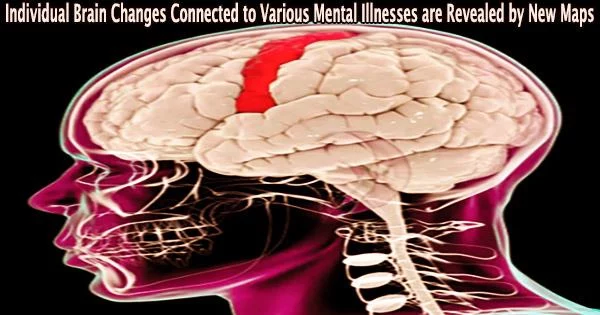The amazing diversity of brain changes found in persons with diseases like serious depression and schizophrenia has been made clear by a ground-breaking experiment assessing brain changes in nearly 1,300 patients with six different types of mental illness.
Researchers at Monash University’s Turner Institute for Brain and Mental Health and School of Psychological Sciences led the study, which was published in Nature Neuroscience, and used brain imaging to estimate the size, or volume, of more than 1000 different brain regions.
“Over the past few decades, researchers have mapped brain areas showing reduced volume in people diagnosed with a wide variety of mental illness, but this work has largely focused on group averages, which makes it difficult to understand what is happening in the brains of individual people,” said PhD student Ms Ashlea Segal, who led the research. “For example, knowing that the average height of the Australian population is about 1.7 m tells me very little about the height of my next-door neighbor,” she added.
The team used brand-new statistical methods created by Prof. Andre Marquand, co-leader of the project at the Donders Institute in the Netherlands, to map areas of the brain in individuals with schizophrenia, depression, bipolar disorder, obsessive-compulsive disorder, attention-deficit hyperactivity disorder, or autism spectrum disorder.
The framework we have developed allows us to understand the diversity of brain changes in people with mental illness at different levels, from individual regions through to more widespread brain circuits and networks, offering a deeper insight into how the brain is affected in individual people.
Professor Alex Fornito
“We used a statistical model to establish expectations about brain size given someone’s age and sex. We can then quantify how much an individual person’s brain volume deviates from these expectations, much like the growth charts commonly used for height and weight in paediatrics,” said Professor Alex Fornito, who led the research team.
“We confirmed earlier findings that the specific brain regions showing large deviations in brain volume vary a lot across individuals, with no more than 7% of people with the same diagnosis showing a major deviation in the same brain area,” said Professor Fornito.
“This result means that it is difficult to pinpoint treatment targets or causal mechanisms by focusing on group averages alone. It may also explain why people with the same diagnosis show wide variability in their symptom profiles and treatment outcomes,” he added.
The team then investigated the connectivity of the areas showing large volume deviations.
“Because the brain is a network, dysfunction in one area can spread to affect other, connected sites. We found that, while deviations occurred in distinct brain regions across different people, they were often connected to common upstream or downstream areas, meaning they aggregated within the same brain circuits,” said Ms Segal. “It’s possible that this circuit-level overlap explains commonalities between people with the same diagnosis, such as, for example, why two people with schizophrenia generally have more symptoms in common than a person with schizophrenia and one with depression.”
The group used its novel strategy to pinpoint possible therapeutic targets for various illnesses.
“We found that certain specific brain circuits were preferentially involved in some disorders, suggesting that they are potential treatment targets,” explained Ms Segal. “However, our findings suggest that these targets will only be appropriate for a subset of people. For instance, we found evidence that brain circuits linked to frontal areas were preferentially involved in depression. These circuits are commonly used as targets for non-invasive brain stimulation therapies, but our data suggest that they may only effective targets for around 1/3 of people.”
The method that the researchers came up with creates new possibilities for mapping brain alterations in mental illness.
“The framework we have developed allows us to understand the diversity of brain changes in people with mental illness at different levels, from individual regions through to more widespread brain circuits and networks, offering a deeper insight into how the brain is affected in individual people,” said Professor Fornito.
















